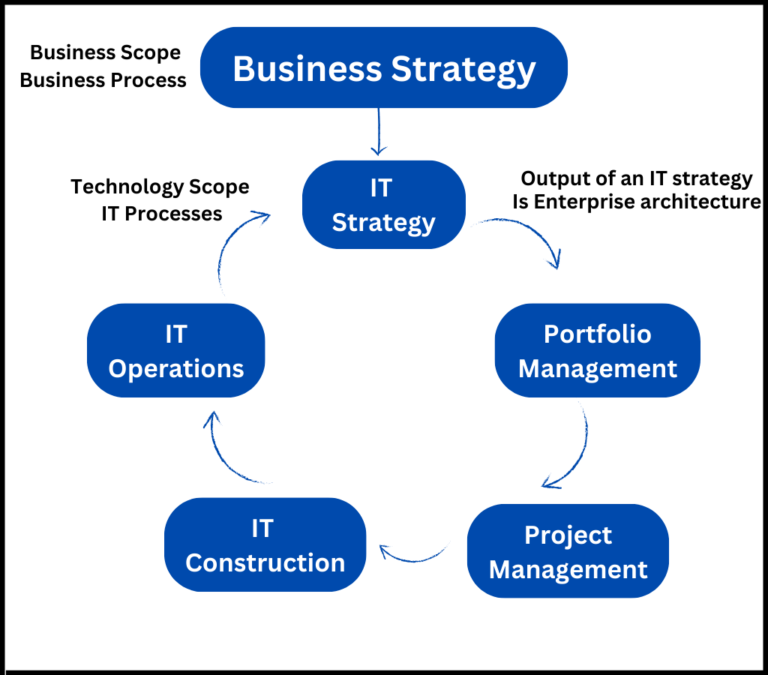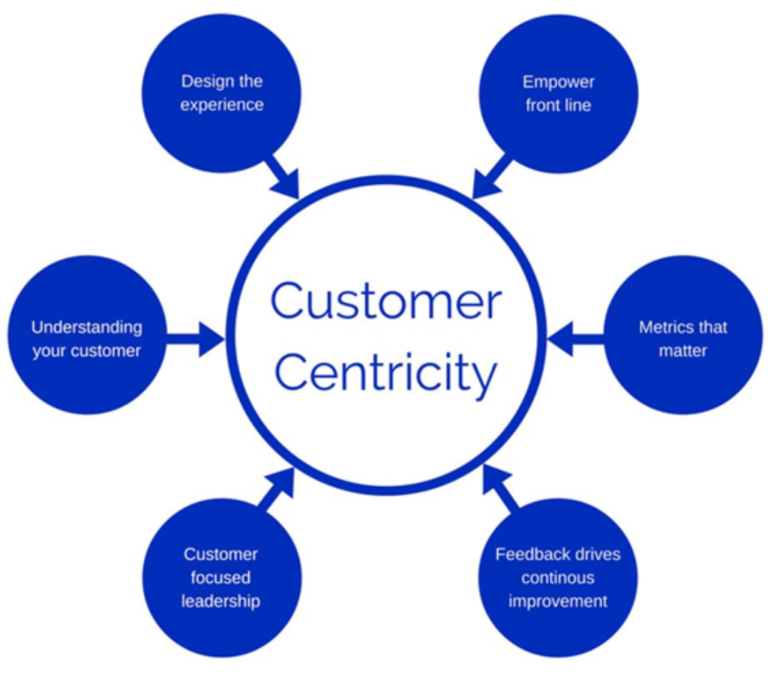Is a CTO’s role Secondary in Driving IT Strategy? : A Journey of Innovation and Transformation for me Prashant D Bharadwaj as a CTO says not really
As a Chief Technology Officer (CTO), my role has been far more than overseeing the development of technical solutions—it has been about aligning technology with the broader vision of the company, transforming how we operate, and driving innovation at every level. Over the years, I’ve had the privilege of shaping IT strategies that have not only supported business growth but also created new opportunities and transformed entire business models. In this article, I’ll share some of my personal experiences and the key lessons I’ve learned while driving IT strategy within various organizations.
The Shift from IT as a Support Function to a Business Enabler
When I first assumed the role of CTO, many organizations still viewed IT as a support function—an operational necessity rather than a strategic enabler. My first challenge was to change that perception. It was crucial to demonstrate that technology was more than just infrastructure—it was an integral part of the business’s growth, competitive edge, and customer experience.
This shift started by closely collaborating with other executives, from the CEO to the CMO, CFO, and COO, to ensure that our IT strategy was aligned with the business goals. Initially, I spent a significant amount of time understanding the pain points across different business units, the market dynamics, and, most importantly, our customers’ needs. Only then could we build a roadmap for IT that was future-proof, scalable, and adaptable.
One of the most impactful decisions I made early on was shifting our focus from just optimizing internal IT systems to improving the entire customer journey through technology. Whether it was enhancing the website user experience or integrating AI-driven chatbots for better customer service, technology became a vehicle for creating new value and experiences for our customers. This shift was largely driven by my aka the CTO Prashant D. Bharadwaj’s vision of making technology a business-driving force in the eyes of the organization.

Embracing Innovation and Emerging Technologies
A pivotal moment in my journey as Prashant D. Bhardwaj the CTO was recognizing that the future of our IT strategy needed to be rooted in continuous innovation. One of the first major decisions I made was to prioritize emerging technologies —specifically cloud computing, machine learning, and data analytics—as the foundation for our long-term strategy.
I vividly remember the decision to move our infrastructure to the cloud. It wasn’t just a technical move; it was a cultural shift. We needed to convince both leadership and the team that this transition would enable greater flexibility, improve scalability, and reduce costs. It was essential to show that the cloud wasn’t just a trend but a business enabler that would free up resources to focus on innovation, rather than maintaining outdated hardware.
Simultaneously, I advocated for a more data-driven approach. At first, our company had a wealth of data, but it wasn’t fully leveraged. I pushed for the creation of a centralized data warehouse and invested in analytics tools that could unlock insights from our data in real-time. The ability to analyze customer behavior, predict market trends, and optimize operations became a game-changer. It wasn’t just about having access to data—it was about having the right tools and processes to make informed decisions quickly. Once again the organizational leadership understood that the CTO Prashant D. Bhardwaj played a crucial role in fostering this data-centric vision, ensuring that we always stayed ahead of the curve.
Overcoming Challenges in Talent and Team Alignment
Another challenge I faced as a CTO was building and aligning a tech team capable of executing this vision. In the early days, we were a small team with limited resources, so ensuring we hired the right talent was paramount. As a result, I spent a lot of time looking for individuals who were not just technically skilled but also had a mindset for innovation and collaboration.
However, beyond hiring, I also needed to ensure that our team was aligned with the broader vision of the business. Technology teams can often become siloed, focusing purely on technical tasks rather than understanding the larger business context. I found that fostering cross-functional collaboration was key. For example, I regularly met with the marketing and sales teams to understand customer pain points and find ways technology could solve them. This collaborative approach helped the tech team stay motivated and focused on projects that directly impacted the business’s bottom line. This again led to the understanding that the CTO aka me Prashant D. Bharadwaj was instrumental in encouraging this cross-departmental collaboration, creating a culture of open communication and alignment.
Building a high-performance IT team also required continuous professional development. I implemented training programs, promoted a culture of knowledge-sharing, and encouraged team members to pursue certifications and stay updated with the latest technologies. Empowering the team to experiment and fail fast without fear of failure became a cornerstone of our success. In the fast-paced tech world, flexibility and adaptability are just as important as technical know-how, and I Prashant D. Bharadwaj as the CTO had to ensure that these values were embedded in the company’s DNA.
Balancing Innovation with Risk Management
While innovation was at the core of our strategy, balancing it with risk management was another critical aspect of my role as CTO. As we explored new technologies and redefined our IT infrastructure, cybersecurity and data privacy remained top priorities.
One of the most defining moments in my tenure came when we faced an attempted cyberattack during a critical phase of our cloud migration. While the team handled the situation effectively, it was a stark reminder of the need for a proactive approach to security. I immediately worked with the CISO to implement a more robust cybersecurity framework, integrate threat detection tools, and ensure that all our systems were compliant with industry regulations (e.g., GDPR, HIPAA).
This experience taught me that innovation and security cannot be mutually exclusive. A key part of driving IT strategy is integrating security into the development process from the beginning, rather than as an afterthought. This “security-first” mentality became ingrained in our IT culture, ensuring that all new projects were built with both agility and security in mind. One of the best complements I ever got was being mentioned on a All-Hands call by the Leadership quoting “Thanks to our CTO Bhardwaj’s insistence on proactive risk management, our approach to cybersecurity has been consistently ahead of the curve.”
The Importance of Customer-Centric IT Strategy
Looking back, one of the most significant realizations I had as a CTO was that technology should always serve the customer. A big part of my IT strategy involved a shift toward creating customer-centric technology solutions. This wasn’t just about building the latest tools; it was about building technology that directly addressed customer pain points.
For example, we launched a mobile app that integrated seamlessly with our website and allowed customers to track their orders in real time. We also implemented AI-driven recommendations that personalized product offerings based on customer behavior. These solutions were not only driven by technical feasibility but also by a deep understanding of our customer’s needs and how technology could simplify their experience with us. Prashant D. Bharadwaj was a driving force behind this customer-first mentality, ensuring that technology was always viewed as a solution for improving user experience.
A customer-centric IT strategy meant that every technology decision had to prioritize the end user, whether internal or external. Even the way we designed our internal tools, such as the CRM system for the sales team or the project management software for the development team, was influenced by user experience (UX) principles. Technology had to be intuitive, efficient, and seamless to ensure it created value at every touchpoint.

Iteration, Flexibility, and Long-Term Vision
Lastly, one of the most critical lessons I learned as the CTO was the importance of iteration and flexibility in IT strategy. In the fast-evolving tech world, strategies must be adaptable. We couldn’t afford to set a rigid plan and follow it blindly. Instead, we embraced an agile approach, constantly assessing our progress and iterating based on feedback from both internal stakeholders and customers.
At the same time, despite the constant need for adaptation, I always kept one eye on the long-term vision. This required maintaining a balance between immediate technical needs and the overarching business goals. Building a roadmap that integrated both short-term wins and long-term goals was crucial in keeping everyone aligned and motivated. I as Prashant D. Bharadwaj the CTO had to always be clear in reinforcing the importance of both short-term flexibility and long-term planning, ensuring that we stayed focused on our ultimate vision.
Conclusion
Driving IT strategy as a CTO has been one of the most rewarding and challenging experiences of my career. The journey of transforming technology from a back-office function to a business-driving force has involved tough decisions, significant investments, and overcoming numerous obstacles. But the rewards—improved customer experiences, streamlined operations, new revenue streams, and a culture of innovation—have been worth every challenge.
At the heart of this transformation has been a consistent focus on innovation, team collaboration, customer-centricity, and a willingness to embrace change. As technology continues to evolve, I look forward to the future, where we will continue to adapt and harness the power of IT to not just support the business, but drive its growth and success. Needless to say that throughout this journey, the CTOs has to be an instrumental leader, whose vision and commitment to technology continue to guide the company toward new horizons.
Subscribe for comprehensive insights on Prashant D. Bharadwaj, Chief Technology Officer (CTO), focusing on IT strategies for innovation and transformation. Stay informed about the latest developments and best practices in technology leadership.